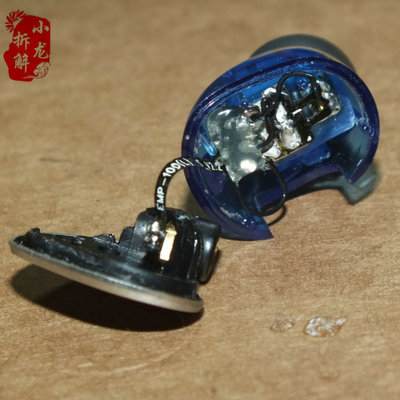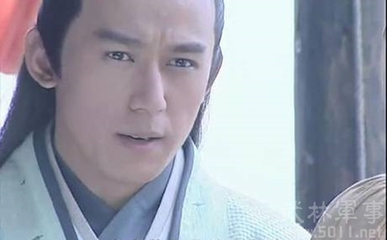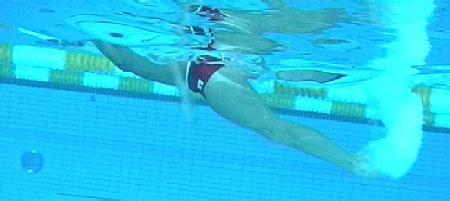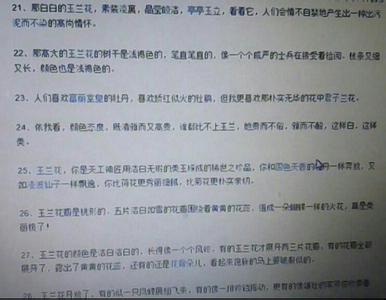If we look at the limited historical literature and investigation materials, we can see that there are multiple reasons for the appearance and long-term continuance of the matrilineal family and the so-called “walking marriage” custom of the Mosuo people: 1) The geographical environment and natural conditions. Lugu Lake is called “xie na mi” in the Mosuo language, which means a large area of water. The word “mi” means “female, mother or the Yin principle”. Therefore, according to the Mosuo language, Lugu Lake means “Mother Lake”. Lugu Lake is a freshwater, high mountain lake which lies between the Jinsha and Ya-lung Rivers; it covers an area of more than 50 square kilometers. Historically, Lugu Lake and its surrounding area were far away from transportation routes and the towns and cities of Sichuan and Yunnan. As such it was relatively isolated. However, the lake and its surrounding areas had rich resources. Within such a geographic environment and natural conditions, the population flow or migration was very rare. 2) The number of the members of a matrilineal family is generally 7-10, sometimes reaching 32 in the area south of Yongning. The most important characteristic of this kind of large family is that the family has a high number of laborers. In the Lugu Lake area, where agriculture is the main activity of production and where productivity is low, the survival of this kind of family is easier than that of a small patrilineal family consisting of one husband and one wife. “In the matrilineal family, there are no conflicts between mother and daughter, and between couples, thus the family is very happy and harmonious”. At the same time, there are no problems with regard to providing support to old people and raising orphans. Because of these characteristics the Mosuo people naturally endorsed this system, and as such, it was maintained for a long time. Because similar geographical environmental and natural conditions exist in other places of Yunnan and Sichuan, there might be other important reasons for the existence of matrilineal culture around Lugu Lake. In addition to the reasons mentioned above, the ethnic origin of the Mosuo people might be another important reason for the appearance of Mosuo matrilineal culture. It is generally acknowledged that the ethnic origin of the Mosuo is related to the ancient Qiang people. Some historical literature indicates that the ancient Qiang had both patrilineal and matrilineal systems. The culture of the ancient Qiang who migrated to the south merged with that of the local tribes, and their matrilineal culture, which was also brought to the southwestern region, took root in the relatively isolated area, such as the Lugu Lake area. An in-depth discussion on the causes for the appearance and continuity of the Mosuos matrilineal culture will help us to take proper actions to protect this culture. The matrilineal marriage practice and family form previously existed widely in Chinas history. In addition to the ancient Qiang mentioned above, ancestors of the Han also had this kind of system. However, due to socio-economic development, the patrilineal system was gradually adopted by the Han people. The matrilineal marriage custom and family form have mostly disappeared in the hinterland of China, and remnants only exist in a few places or social groups. Previous studies have different opinions on the issue of whether all ethnic groups who call themselves as “Na” had matrilineal marriage and family form. Some remnants of matrilineal culture can be found in Lijiangs Naxi s Dongba scriptures, vocabularies and marriage customs, which indicate that, historically, they had matrilineal marriage and family form. In addition to the Naxi of Lijiang, the Namuyi people of Mianning, whose origins are related historically with the Mosuo people in Lugu Lake area, also have remains of matrilineal cultural in their marriage customs. It is worth of mentioning here the matrilineal marriage customs and family form of the Zhaba people in Daofu county, Ganzi prefecture, Sichuan province. In the 1960s, the matrilineal culture of the Zhaba people has been noted, and given a primary research focus by the scholars of Sichuan. In the 1980s, some Sichuan scholars clearly proposed that the Zhaba people practiced the “walking marriage” custom. In the 21st century, Sichuan scholars suggested that the Zhaba people might be remnants from the Tang Dynasty dongnu guo (Eastern Female Kingdom), and whose matrilineal culture lasted to the present time. After making a comprehensive analysis of the marriage practices and family forms and/or related cultural remains of the Zhaba people, Namuyi people and Mosuo people, some scholars proposed the idea of a “matrilineal cultural belt” in the Tibetan-Yi corridor. They believe that there is such a cultural belt in the Ya-lung river area of Sichuan, and that, moreover, this cultural belt is related historically with the “Eastern Female Kingdom”. I support the idea of “matrilineal cultural belt”. Through an analysis of the historical literature, there must be such a cultural belt in the history. However, the area of this cultural belt should include not only the Ya-lung river area, but also some part of Jinsha river area, as well as some areas between the Ya-lung and Jinsha Rivers, i.e. the area of present day Ninglang in Lijiang and Yanyuan in Sichuan. As the result of different historical causes, the scope of the cultural belt became smaller and smaller. Whether or not the “matrilineal cultural belt” existed in the Tibetan-Yi corridor, whether other matrilineal cultural places exist in Sichuan and Yunnan, - all of these issues should be given further attention. It is worth of mentioning here that in the research for the protection of Mosuo matrilineal culture, we should pay attention to the Zhaba peoples matrilineal culture and their marriage-family form, and provide a comparative study on them. Family form is connected with marriage forms. Generally speaking, a diversified marriage structure will bring a diversified family structure. Research studies of the Mosuo family in Yongning reflect that there are three kinds of family form in the local area, the: 1) matrilineal family; 2) patrilineal family; and 3) coexistence of a matrilineal-patrilineal family. Within these three forms of family, the matrilineal family is the one which appears the earliest. With regard to the patrilineal family, some scholars think that it started to appear during the Yuan dynasty, and that its appearance is related to the central governments implementation of the Tusi system (native official) in Mosuo area. This viewpoint is reasonable, because both the Tusi and “sipi”( separated from Tusi family) adopted the patrilineal family system. However, in addition to this reason, some materials also indicate that there were patrilineal families which separated from matrilineal families due to other reasons. In addition to the matrilineal family and patrilineal family, there is also a kind of matrilineal-patrilineal family. Based upon their investigations, some scholars suggest that the matrilinealpatrilineal families of the Mosuo “ are a kind of transitional form from the matrilineal family to patrilineal family”. It is worth noting here that Zhaba people in Sichuan province also have matrilinealpatrilineal families. However, the reasons for this are different from those of the Mosuo. In the case of the Zhaba, it seems that this form is not a kind of transition from the matrilineal family to patrilineal family. It is just for the purpose of continuing the blood line, and, in this case, the matrilineal and patrilineal forms could be alternated and switched. The analysis of the Zhaba people with regard to the appearance of the mixed matrilinealpatrilineal family form gives us a hint that the matrilinealpatrilineal family form of the Mosuo might not be a transitional form from between the two different family systems, but that in many cases, it is the result from the purpose of continuing the blood lines of a family. On the whole, the reasons for the coexistence of the three different family forms among the Mosuo are: 1) the reasons for the existence of matrilineal family form have not changed radically; 2) the patrilineal family form appears with political, economic and cultural change; 3) the mixed matrilinealpatrilineal family form appears in special situations when people need to continue the blood line of the family. Of course, this issue needs further study. After an analysis of the relevant materials collected from investigations, we should point out that the phenomena of the coexistence of matrilinealpatrilineal family form of the Mosuo people will continue to exist while at the same time, the matrilineal cultural values will still exist and occupy a certain position. However, their relative proportions will change over time. Key Words:Mosuo; Naxi; marriage and family form; matrilineal culture; ethnic cultural studies
References:
A. Jackson. yetan dongbajing zhong fanying de naxi qinshu zhidu(On Naxi Kinship System in Dongba Manuscripts).Bai Gengsheng,Yang Fuquan,trans.In guoji dongba wenhua yanjiu jicui(A Collection of International Dongba Cultural Studies).Kunming:yunnan renmin chubanshe,1993.
bianzheng sheji weiyuanhui ed. yanyuanxian jiusuo tusi zuijin gaikuang(Present Situation of the Tusi in Jiusuo of Yanyuan County ). In yanyuanxian gaikuang ziliao jiyao( Data Collection of the General Situation of Yanyuan County).1940.
Guo Dalie,He Zhiwu.naxizu shi (History of the Naxi).Chengdu:sichuan minzu chubanshe,1999.
G. Prunner.naxi xiangxingwen shougao zhong suo fangying de qinshu zhidu (Kinship System Reflected in Naxi Pictograph Manuscripts).Bai Gengsheng,Yang Fuquan,trans.In guoji dongba wenhua yanjiu jicui(Collection of International Dongba Cultural Studies).Kunming:yunnan renmin chubanshe,1993.
He Shaoying.naxizu wenhuashi(Cultural History of the Naxi).Kunming:yunnan minzu chubanshe,2001.
J. F. Rock.zhongguo xinan gu naxi wangguo (Ancient Naxi Kingdom in Southwest China).Liu Zongyue trans. Kunming:yunnan meishu chubanshe,1999.
Li Xingxing.zangyi zoulang de wenhua tezheng (Cultural Characteristics of TibetanYi Corridor).In Forum of Chinese Culture,2003(1).
Li Shaoming.xu (Preface).In naxizu lishi wenhua yanjiu(Naxi Historical Culture Studies).Zhao Xinyu. Beijing:minzu chubanshe,2008.
Liu Yong,Fengmin.xianshui hepan de daofu zangzu duoyuan wenhua(Multiculture of the Daofu Tibetan in Xianshui River Area).Chengdu:sichuan minzu chubanshe,2005.
Marco Polo.make boluo xingji・di 116 zhang “jian du zou”(The Travels of Marco Polo).Feng Chenjun trans.Shanghai: shanghai shudian chubanshe,1999.
Ninglang yizu zizhixian zhi(History of Ninglang Yi Autonomous County).Kunming:yunnan minzu chubanshe,1993.
Ren Naiqiang.hua yang guo zhi jiaobu tuzhu (Annotations to Hua Yang Guo Zhi).Shanghai:shanghai guji chubanshe,1987.
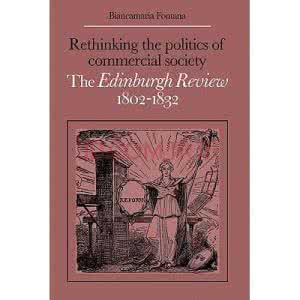
Xu Zhongshu.xu (preface), In qiangzu shi (History of the Qiang).Rang Guangrong,Li Shaomin,ed.Chengdu:sichuan minzu chubanshe,1984.
Yan Ruxian,Song Zaolin, Liu Yaohan.sichuansheng yanyuan muli liangxian nariren shehui diaocha(Social Survey on the Nari People in Yanyuan and Muli of Sichuan Province). In sichuansheng naxizu shehui lishi diaocha(An Investigation on the Social History of the Naxi in Sichuan).Chengdu:sichuansheng shekeyuan chubanshe,1987.
Yanyuan xianzhi(History of Yanyuan).Chengdu:sichuan minzu chubanshe,2000.
Yang Xuzheng.sichuansheng yanyuanxian zuosuoqu luowacun “nari”ren de hunyin xingtai he jiating jiegou diaocha(An Investigation of the Marriage Form and Family Structure of the Nari People at Luowa Village,Zuosuo District,Yanyuan County,Sichuan Province). In sichuansheng naxizu shehui lishi diaocha(An Investigation on the Social History of the Naxi in Sichuan).Chengdu:sichuansheng shekeyuan chubanshe,1987.
Zhan Chengxu,Wang Chengquan.yongning naxizu de azhuhun he muxi jiating(Azhu Marriage and Matrilineal Family of the Naxi in Yongning).Shanghai:shanghia renmin chubanshe,1980.
Zhou Rucheng. yongning jianwenlu(Observations in Yongning). In naxizu shehui lishi diaocha(Investigation of the Naxis Social History).Kunming:yunnan minzu chubanshe,1986.
 爱华网
爱华网